After the panic of 1837 and the subsequent 5 year depression thereafter known as the Hard Times, Lewis Feuchtwanger, a pharmacist, issued tokens made of German Silver, an alloy primarily made of copper, nickel, tin, and zinc. It was during these times that much of the coinage in the U.S. was hoarded and disappeared from circulation.
Decades before the use of nickel-alloy for circulation coinage in the United States, Feuchtwanger proposed his token’s alloy to Congress as a lesser expensive metal for use in the minting of U.S. coppers. Though Congress entertained his idea, they ultimately turned down his proposal.
Feuchtwanger didn’t let rejection by Congress stymie his entrepreneurial efforts. Instead of giving up on the idea, he chose to market his “silver” composition to store keepers, merchants, and the public at large.
Out of his pharmacy at 2 Courtlandt Street in New York City, Feuchtwanger dispensed his tokens, often handing them out as change. Many remained in circulation for decades, with some being traded as currency up to and during the Civil War.

In addition to his one cent tokens, Feuchtwanger also minted undated one cent tokens, and 3-cent tokens made of the same alloy. Moreover, additional store card tokens of varying values were produced using his metal composition.
In total, there are currently 14 different known varieties of Feuchtwanger’s One Cent pieces. Many are quite common and can be readily obtained in the collectors market. Other varieties are quite rare.
The specimen pictured below is the HT-268 (1-A) Feuchtwanger Cent variety. Having survived in Choice Very Fine grade, you will notice obverse wear on the specimen, exhibiting tell-tale signs that the specimen had been circulated in commerce.
As with most Feuchtwanger Cents, those that circulated most commonly exhibited wear along the length of the serpent, as well as along the highest points of the eagle’s feathers.

The specimen below is a HT-268 (2-A) variety. Like its counterpart above, it also saw circulation, and thus is also Choice Very Fine in grade. While its obverse is different, its reverse is the same. Both the specimen above and the specimen below share the same Reverse ‘A’ type. A distinguishing characteristic of the Reverse ‘A’ variety is the unusual spacing between the letters ‘O N E.’

Of the 14 known varieties of the Feuchtwanger cent, there exist six different varieties of obverses, and nine different reverses. Their pairings and respective rarities are denoted in the following:

Plates of Varieties
I have prepared plates which describe all of the die pairings for the Feuchtwanger Cent. To my knowledge, these plates do not exist anywhere. The plates illustrate each of the obverse and reverse die pairings, with rarities:







Attribution Instructions
Below are instructions on how to attribute a Feuchtwanger cent. I recommend using the above plates as a visual aid.
To attribute a Feuchtwanger’s Cent, first perform Obverse Diagnostics, then perform Pairing.
Obverse Diagnostics
-
Does there exist a curved line above the ‘8’ and ‘3’ in the date? If yes, it is an Obverse 5. If no, go to step 2.
-
Counting from RIGHT to LEFT starting at the eagle’s leg, is the third tail feather clearly NOT touching the ground? If yes, it is an Obverse 3. If no go to step 3.
-
Counting from RIGHT to LEFT starting at the eagle’s leg, is the first tail feather touching the top of the snake? If yes, go to step 4. If no, go to step 5.
-
Is the base of the ‘7’ in the date higher or equal to the base of the ‘3’? If higher, it is an Obverse 1. If equal, it is an Obverse 6.
-
Is the number ‘3’ in the date lower than the number ‘1’? If lower, it is an Obverse 4. If higher, it is an Obverse 2.
Pairing (Reverse Diagnostics)
First Plate (Obverses 1 and 2)
These two obverses can only be paired with Reverse A. Therefore, based on Obverse Diagnostics, the specimen is 1-A or 2-A.
Second Plate (Obverse 3)
-
-
Does the reverse have two berries inside the top right of wreath? If yes, it is a Reverse C. If no, go to step 2.
-
Does the reverse have 12 or 13 berries? If 13 berries, it is a Reverse G. If no, go to step 3.
-
In ‘CENT’, does the top horizontal stroke of ‘N’ touch the top horizontal bar of ‘T’? If yes, it is a Reverse E. If no, go to step 4.
-
In ‘ONE’, is the top of the ‘O’ about equal to the top of ‘N’, or is it distinctly lower? If about equal, it is a Reverse B. If distinctly lower, it is a Reverse D.
-
Third Plate (Obverse 4)
Does the wreath’s left stem touch the ‘M’ in ‘COMPOSITION’ and also does the lower bases of ‘E’ and ‘R’ in ‘FEUCHTWANGER’S’ touch? If yes, it is a Reverse F. If no, it is a Reverse E.
Fourth Plate (Obverse 5)
Is there a berry to the left or right of the bow inside the wreath? If left, it is a Reverse H. If right it is a Reverse G.
Fifth Plate (Obverse 6)
-
-
To the left of the bow, is there a stem without a berry? If yes, it is a Reverse I. If no, go to step 2.
-
Does the reverse have 12 or 13 berries? If 13 berries, it is a Reverse G. If 12 berries, it is a Reverse A.
-
Aaron Packard ![]()
Notes and Sources
- More Adventures with Rare Coins, Q. David Bowers, Collectors Universe, ©2002, pgs.95-131
- Standard Catalog of United States Tokens 1700-1900 Fourth Edition, Russell Rulau, Krause Publications, ©2004, pgs.164-167
- A Guide Book of United States Tokens and Medals, Katherine Jaeger, Whitman Publishing, ©2008, pg.67
- The Numismatist, June 1913
- ‘Attributing Feuchtwanger One Cent Tokens,’ TAMS Journal Volume 44, December 2004
- Catalogue of the Celebrated Collection of United States and Foreign Coins of the Late Matthew Adams Stickney ESQ., Henry Chapman, Davis & Harvey Auctioneers, 1907
- The New York Public Library
- The New York Evening Post, November 18, 1837
- New York’s Crystal Palace & The H.B. West Tokens - November 6, 2019
- Edward Aschermann’s Cigar & Tobacco Tokens - November 2, 2019
- George T. Hussey & His Special Message Tokens - October 30, 2019

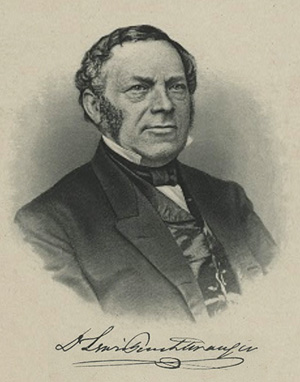
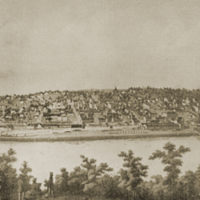
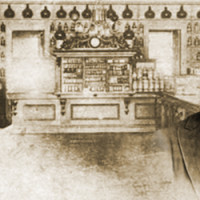
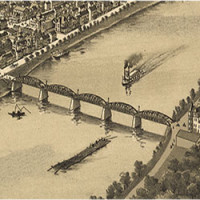
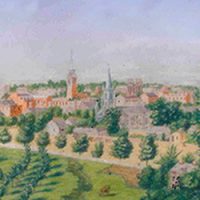
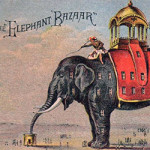
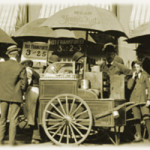
Your Feuchtwanger Cent information and photo display is very fine with one exception.
After the “Table of Reverses”, you immediately go to “Second Plate: Die Paring for Obverse 3”.
However, you have omitted “First Plate: Die Paring for Obverse 1 and Obverse 2”.
This First Plate shows photos of Obverse 1, Obverse 2, and Reverse A with rarity listings 1A – R5 and 2A – R4.
You would be doing the numismatic hobby a favor by including this “First Plate” from now on.
Best to you,
Wayne Kingsbury
Hi Wayne –
Thanks for pointing this out. The First Plate has been added. It was inadvertantly omitted when the site was migrated over to its new CMS.
Regards,
Aaron Packard
Thank you for all your good information on the Feuchtwanger cent. We currently have a few choice pieces up for auction on our private site if you want to bid or just use for reference purposes. It’s nice to see interest in Feuchtwanger and his interesting story.
I just remembered another slight error, Pairing (Reverse Diagnostics) Second Plate (Obverse 3), Step 3: “In ‘CENT’, does the top horizontal stroke of ‘E’ touch the top horizontal bar of ‘T’?]”
It should read: “In ‘CENT’, does the top horizontal stroke of ‘N’ almost touch the top horizontal bar of ‘T’?”
It appears you made a typo.
Indeed Wayne, I made I typo when I wrote my instructions; it has been corrected. Thanks again!
Hi, using your information I believe I have a feuchtwangers one cent coin 3E R2. I think it is in good condition, how do I find out how much it is worth and how would be the best way to sell it. Just so you know I have no knowledge about coins so any help will be much appreciated.
Thanks,
Chuck Hancock
Hi Chuck –
First I’d recommend validating that indeed you have a 3-E. You are welcome to send me a clear photo of its obverse and reverse via email and I’d be happy to validate. This is just in case it’s not a 3-E, but rather a much more rarer variety.
Once validated as a typical variety, in my opinion, the easiest way to sell such an item is to put it up for auction on ebay. In the case of Feuchtwangers, although there’s no guarantee, bidders will usually compete for a specimen until the hammer-price reaches its usual market-price.
Aaron,
I have a picture of the front and back. I don’t see a way to attach them here so if you will send me an email I’ll send them to you. They are pretty large 1.25MB and 1.41MB, do you want me to compress them or send them one at a time? I really appreciate you taking the time to help me out with this.
Thanks,
Hi Chuck –
Feel free to email them to the support email address listed on my ‘contact’ page. The file sizes are ok. I’ll keep my eyes peeled for your email.
Thanks
Aaron,
Did you get the two files I sent you? Just wondering what you thought of my coin.
Thanks,
Hi Chuck –
I examined your photos you sent. You indeed have a 3-E variety. Nice job on the attribution.
Based solely on what I can make out with your pictures, I do not see any obvious damage that will preclude it from obtaining a grade from PCGS or NGC.
So you have two choices — sell it raw (unslabbed) or send it in to get graded and “slabbed” from PCGS or NGC. NGC will label the slab with your specific variety, PCGS does not.
Given it’s not at an uncirculated or higher grade, I would not necessarily recommend paying a fee to have it slabbed. I would just list it on ebay and let the market take its course. You might want to consider opening the auction with ‘no reserve,’ or low reserve (Many sellers on ebay set their reserves too high, and the specimens never sell.)
Perhaps you might want to peruse ebay and compare other 3-E specimens to give you an idea.
Good luck!
Aaron Packard
Fantastic site – I wish there were more sites describing coins and die matching that are as easy to follow and as complete as this write up. Outstanding. Thanks!
You’re welcome Jeff!
Hi all. I’ve been a collector since age 7 in 1964, and a dealer since 1985. At about age 14, I acquired a Feuchtwanger cent without knowing anything about them. It was subsequently stolen when my home was broken into and my entire collection stolen. Discouraged, I gave up collecting. Then after college and the navy, I opened a collectibles store. Mostly comics and sports cards, but I began to acquire coins again, rebuilding my collection and starting to deal in coins as well. I chanced upon another Feuchtwanger and bought it, still without knowing anything about them. Fast forward 10 to the internet age and Ebay, and I’ve learned a lot more, and now own over 20 of them, including 3 three cent pieces. Having read the comments, there seems to be some knowledgeable people making comments, and there are still a lot of gaps in my knowledge.
So if anyone can answer my questions, I would appreciate it.
Is there a club or forum specifically for Feuchtwanger collectors? I can’t find one mentioned on the net, and if there isn’t one, would people be interested in forming one?
Is there a grading guide? I have graded specimens from ANACS, PCGS, NGC and ACG that appear to have been graded with significantly different standards. It appears to me that striking standards were low, and that many Feuchtwangers were struck with worn dies which make it difficult to tell if coins are worn from handling or just poorly struck from worn dies.
I have a 3 cent Eagle that was sold to me as an electrotype. It’s dark grey, possibly an iron alloy, and undated. Does anyone know anything about these?
Does anyone know of other Feuchtwangers besides the 14, 1 cent varieties, the three cent and the 12 1/2 cent? One article I read mentioned an undated 1 cent, which I’ve never seen mentioned anywhere else.
And finally, I have a bunch of duplicates I would like to trade for other die pairs. I have an extra 1A, 7 extra 3E(bought 7 from a dealer in one lot), 1 extra 4E, and 3 extra 6I’s. I need a 3B, 3C, 3D, 3G, 4F, 5G, 6A, and am always looking for 3 cent and the 12 1/2 cent. Most of mine are VF or better, by my standards
If anyone can answer my questions, is interested in a Feuchtwangers collector’s group, or is interested in trading, let me know.
-Brad
Hello Brad,
I have only one coin and it is an 1837 1-cent HT-268 5G and I would like to sell it. I feel that this coin is in relatively excellent shape. If you are still looking for the 5G please get hold of
me.
Looking forward to hearing from you,
David
702-771-3552
I decided to go ahead and create a Feuchtwanger collectors group on Facebook at https://www.facebook.com/groups/586792071410400/
Feel free to join
Hi Brad –
I have requested membership to your group.
Thanks, kindly
Aaron Packard
Of the 11 different Rarity Scales (R1 thru R8, 9, & 10) that you have generously listed in your “The Various Numismatic Rarity Scales”, which is the correct scale to use for your rarity listings of Feuchtwanger Cents of R1 thru R8? Your detailed contributions to numismatics are greatly appreciated by me and probably by many other numismatists as well. Thank you, Wayne Kingsbury
Hi Wayne –
The correct rarity scale is “Early American, Hard Times, and Merchant Token Rarity Scale”
Thanks for your question.
Aaron Packard
Thank you, Aaron. I am glad to know that. Best regards, Wayne
I recently inherited several of these coins. One cent has Low 120 written on the holder. I also see several of these listed that way on ebay. What differentiates the Low 120 from the others?
Hi Jill –
Lyman H. Low was one of the first researchers who cataloged many of the private tokens of that era, including the Feuchtwanger compositions. Each token in his catalog was listed by a “Low” number. In the case for the one-cent Feuchtwanger pieces, they were listed as “Low 120.”
Russell Rulau, much later, also cataloged many of the same private tokens that Lyman H. Low cataloged, including the Feuchtwanger one-cent pieces. Each token in Rulau’s catalog was listed by a “HT” number. HT = Hard Times.
Thus, a “Low 120” is the same as Rulau’s “HT-268.”
I recommend that you follow the instructions provided to determine which exact varieties of the Low 120/HT-268 pieces you have.
Hope this answers your question.
Good luck,
Aaron Packard
Hello, I have a Feuchtwanger token that has no date on the front and a design with a barrel on it that has GSK on it. On the bottom of the coin on the back side it says SHO PHIL. Can anyone provide insight on what this is? Thank you
Please send me photographs of the specimen to the email address located in the contact section of the website.
I will do my best to attribute it for you.
Thanks, kindly
Aaron Packard